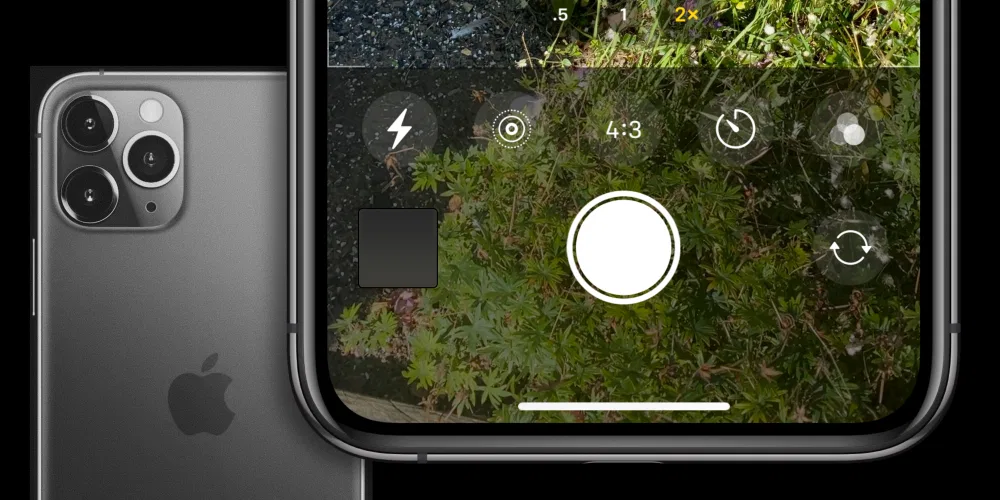The iPhone camera is one of the most capable phone camera ever. It has essentially replaced the compact camera market. Now, more than 3 billion people carrying their cameras everywhere they go because the smartphone is basically the camera.
Everyone takes snapshots with their camera. But with a little more knowledge, practice and insight, one of the best photos will be taken by iPhone. As a photographer’s adage goes, “The best camera is the one you take it with you”.
Vision
Before even picking up the iPhone to take a picture, it is best to have a vision of how would the picture end up. Even before the first words of a movie script is written or the pencil has been sharpen for sketch, the artist has a vision of how things will happen and look like.
Making a great photograph takes a good amount of planing. The location of the shoot, the subject, time of the day, the weather if taking outdoors, the angles that you are pursuing. Those factors takes consideration in how the photos will turn out.
I always like Ken Rockwell’s F.A.R.T method in taking pictures. In this method, the F is for Feel and A is for Ask is the first step of taking good pictures. Go around feel if this is a good place for a picture and ask how to make this scene works.
Light and Colors
In film and photography, light is everything. It shapes the outcome and creates the mood. You brighten the light the make it clearer and dim it to make it more mysterious. Light is everything.
In “Daughter”, a short by Apple taken using the iPhone 11 Pro Max, you can see the director uses mics and lighting equipment to manipulate the light to get that shot. Yes, some of the lighting like the Arri Skypanel costs around $6,000, but this emphasis on how important lighting is.
Of course, not all of us can spend four figures on lighting alone but we can manipulate natural lighting to our advantage. Just by being aware of the light source and where the light source is pointing, you already ensure that your picture is better. For example, when taking outdoor pictures, you can get the subject lighted better by having them facing the sun instead of you facing the sun.
Knowing color setting on your phone also does wonder on how the picture will turn out. By default, iPhone photos looks neutral and sedated. You can pump up the colors by using the color filters like Vivid. You can also inject some drama by chasing tone instead of colors by going black and white or sepia.
Using flash on the iPhone is a skill on it self. Since the flash is not that powerful and flash power decrease with the square of the distance, a lot of practice and experience would be needed to master the iPhone flash. I would recommend focusing on mastering natural light before moving on to mastering iPhone flash.
Framing
Framing or composition is another important technique to take a good picture. Just moving your iPhone above or below where you normally take which is eye level can dramatically change how the photo will look. Squat down and put the iPhone slightly up to make subject have the Superman pose. Bring the iPhone above head level for a birds eye perspective.
A built in tool in the iPhone that can help you with framing is the grid. You can turn on grid lines on the camera app by going to Settings > Camera > Grid. The general rule is having 2/3 of the frame fill up with one subject and the other 1/3 with another subject. Off center pictures is supposedly more pleasant that being center picture.
Now most iPhone comes with at least 2 lens, you can play more with your framing. The ultra wide lens is a bigger deal than the telephoto lens. In iPhone, the ultra wide is a 13mm equivalent in the DSLR world. In DSLR world, having a 13mm lens is the equivalent of riding a unicorn. And it is available for anybody with a phone.

Now framing for the ultra wide lens is not about getting everything in, but about getting closer to the subject. Getting close and using your ultra wide lens will exaggerate the perspective and create interesting images.
Adjusting
Now the framing is nailed down, you can further enhance your photos by adjusting on how it will look. Touching a subject on the phone app will tell the phone to focus on that subject. Long press and you will active the Auto Exposure and Auto Focus lock. It will ensure that the focus will not chnage. When the AE/AF lock has been activated, you can adjust how bright the subject and the rest of the background will be by moving the dial up and down. Brightness is represented by the sun dial.
Color rendering can also be changed at this point. You can click on the color profile icon (represented by 3 circles of red, green and blue) and choose the color profile to suits the situation. Vivid will bring out the colors by saturating them. Vivid Cool will adjust the tint towards yellow and Vivid Cool will adjust the tint towards blue.
Taking it

This is the easiest part of taking a great picture. Just hold stedy and click. In the default camera app, the shutter speed is automated from 1/8000 of a second to 1/3 of a second depending on lighting conditions.
Taking it to the next level
Of course, by following the steps, you have already mastered 90% of the step that professionals do. But in chasing perfection or the last 10%, people have work doubled or triple or more to get to 100%. This is of course is not an exhaustive list of techniques to improve your photos even more, but more like a guide post and snippet of wisdom that people has imparted to take that photo to the next level.
Location, location, location
One of key ways to get better photos is to find better locations. Getting the best camera in the world is useless if you cannot capture the beauty of the shot. Some can be done in a studio, but natural beauty is loads better. Furthermore, traveling and meeting new culture and people will enrich your worldview. When traveling, do research on the scenic spots and you can sometimes take off from the beaten path.
Rig / Stabilization
Rigs are devices that holds your iPhone. Rigs can also allow you to add attachments on your phone. Attachments like lights and microphone. From this, rigs are more important in videography than photography. But rigs can also hold lens attachments which will help with photography.
Having phone rigs helps in getting the video shot more stable and cinematic. It is the natural process that our hands shake a bit when holding objects. Software and hardware can help with this phenomemon, but it will have some issues when panning. Having rigs or gimbals will eliminate this issue and make your video transitions better and cinematic.
Lens Attachment
You can change how the image will appear on the iPhone by adding lens attachment. While the latest iPhone has dual or triple camera system, there’s so much performance an iPhone lens can do in a small package. A good attachment can enhance the iPhone optics capabilities by adding bigger glass in front. Some when to the extreme by adding cine-lens in front of the iPhone. The most recommend way is to add a rig on the iPhone to hold the iPhone and the lens since the attachment can be bulky and may snap off by accident.
Plug
Support this free website and my family by purchasing through my affiliate links. Thank you.
iPhone:-
- iPhone 12 mini - Buy at Amazon
- iPhone 12 - Buy at Amazon
- iPhone 12 Pro - Buy at Amazon
- iPhone 12 Pro Max - Buy at Amazon
Rigs and attachments:-
- Ulanzi iPhone Rig - Buy at Amazon
- Ulanzi Video Light - Buy at Amazon
- DJI Osmo Gimbal - Buy at Amazon
- RODE video mic - Buy at Amazon